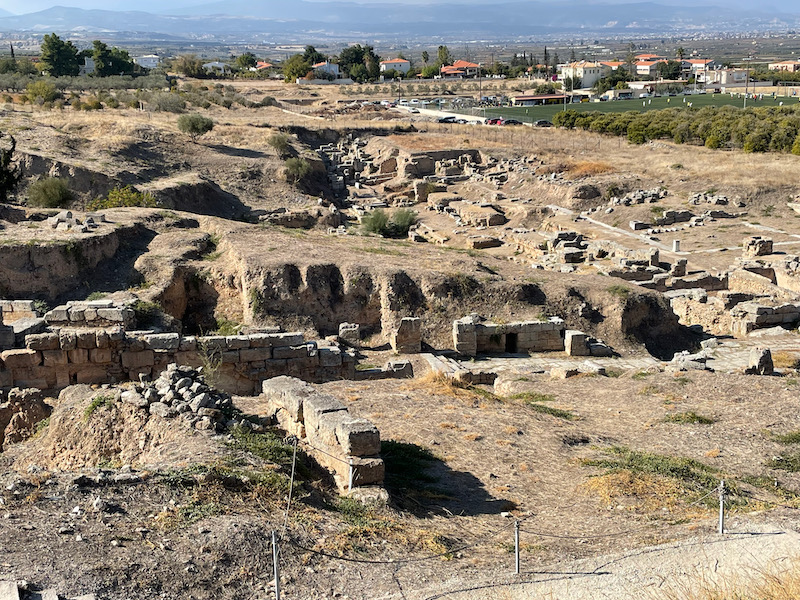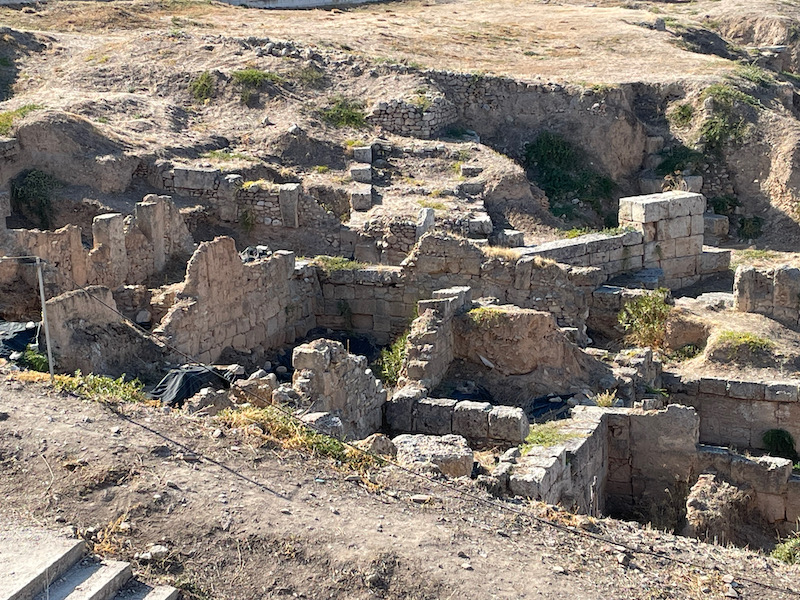Our Blog - Greece 2024 - Ancient Corinth
We don't tend to do many guided tours, especially private ones. But we thought that Ancient Corinth would be a good archeological site to try a private tour. I mentioned on the main page our "first big problem averted" with this tour. We had booked the tour quite awhile ago, and had even texted back-and-forth with the guide a few weeks prior to the vacation. Then the day before we were leaving, she texted again to tell us that the "low season" started on November 1st and so most archeological sites are closed on Tuesdays. Ugh. We could rearrange things to stop by Ancient Corinth on the way back to the airport, but then she wasn't available that day. She was able to find another tour guide who was available. The visit went from 3 hours down to 2 hours but it was also a little bit cheaper. But we were just glad that she was able to find another tour guide for us. No problems getting to the site and meeting up with the new guide, and so off we went.
The first stop was the museum. We didn't look at very many things, but she used the various rooms to give us a bit of background on the site. It was one of the largest and most important city-states in Ancient Greece with a population of 90,000 in 400 BC. The Romans demolished Corinth in 146 BC, built a new city in its place in 44 BC. But even before that, Neolithic pottery found here suggests that the site of Corinth was occupied from at least as early as 6500 BC, and continually occupied into the Early Bronze Age. It was in the perfect position on the narrow isthmus between Peloponnese and mainland Greece for trading. The city had two main ports: one on the Corinthian Gulf, which connected the city to its western colonies and one on the Saronic Gulf, which served the ships coming from Athens, Ionia, Cyprus and the Levant. There was even a road between the two ports to transport entire ships between the two ports on a land-barge pulled by horses or slaves.
We started in the atrium, which houses a collection of statues and sculptures, most of them from Roman times. One interesting thing that our guide mentioned is that most statues are found without heads, but this is quite normal. In Roman times, the statues were made in 2 pieces: the body and the head. When they find the bodies, there is an indention that the head piece fits into. This was done consciously because the heads were actually changed quite often, whenever there was a new emperor, for example. Once she said that, I could see the indention area in every statue body that I saw. The Romans took over in the 1st century BC and under the Romans, Corinth was a major city in Southern Greece.
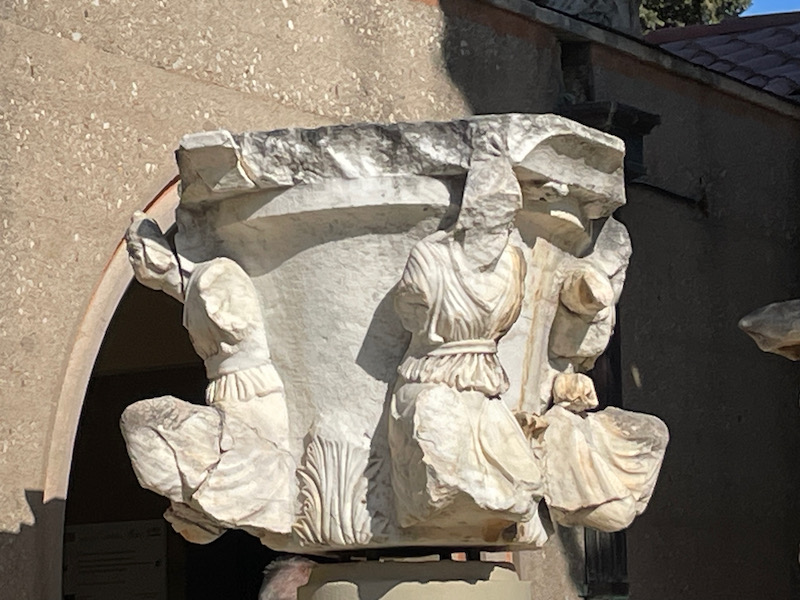
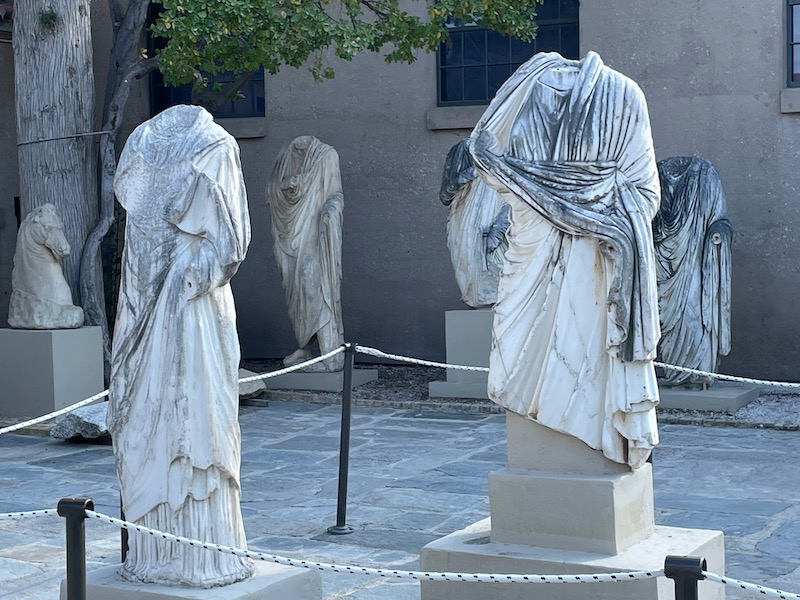
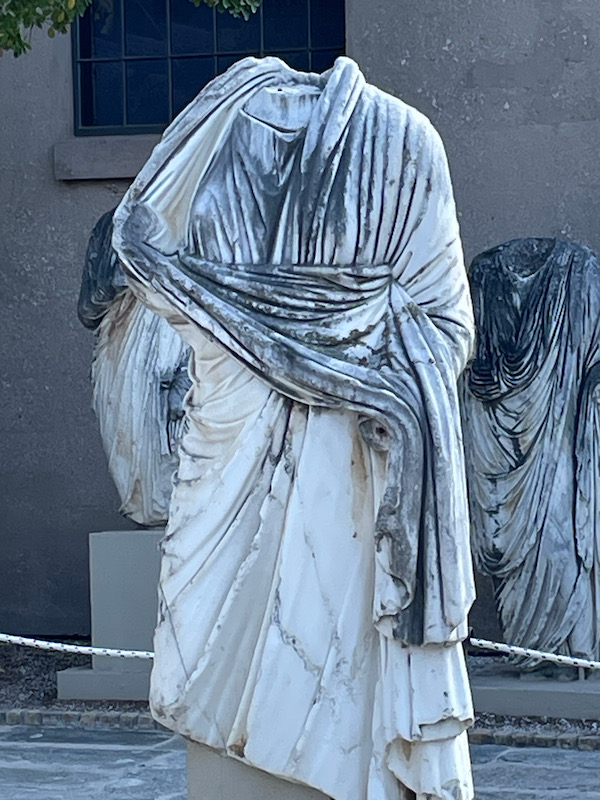
These next come from the theater. In the early 1st century AD, a "scene building" was constructed with a three-storied façade and relief’s under the columns. The "scene building" was behind the semi-circular stage and would allow the performers to change masks and costumes. The first picture is a piece from a section showing the Battle fo Gods and Giants, the second shows Hercules with the Erymanthian boar, and the last shows part of the Battle of Greeks and Amazons.
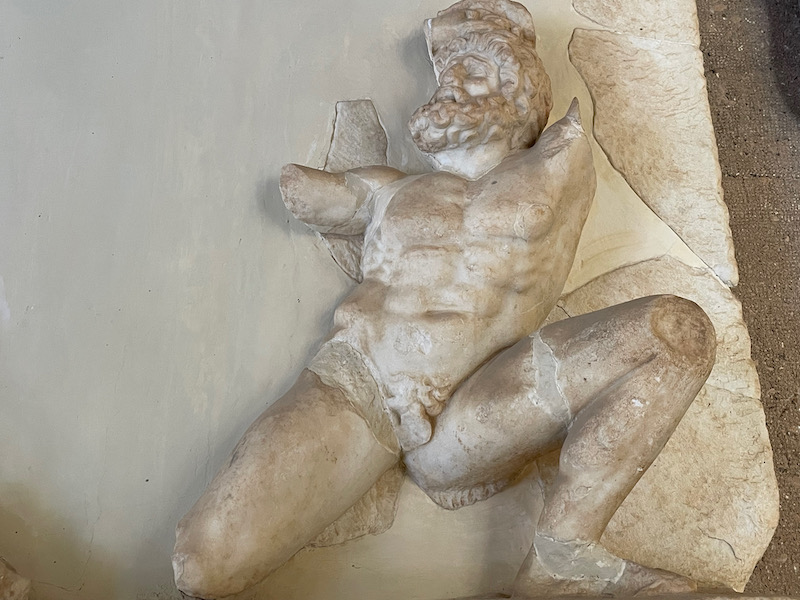
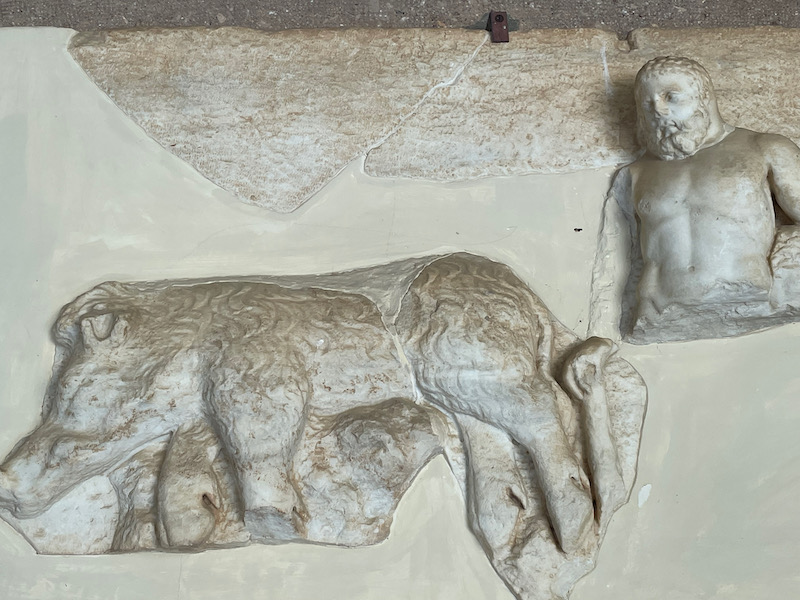
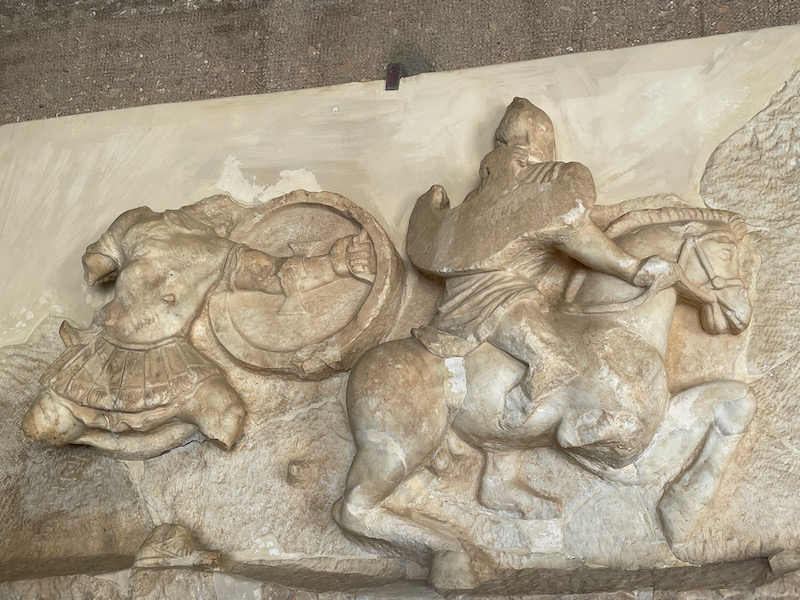
In the Classical Gallery, she talked about these "twin kouroi". A Kouros is a free-standing Ancient Greek sculpture that depicts a life-size nude male youth. Similar to statues in Ancient Egypt, they face forward with arms hanging by the side and with one foot slightly ahead of the other. There is a story behind these. These 2 statues, dating to the 6th century BC, were supposedly dug up in 2009 by a couple of farmers a short distance from Ancient Corinth. As they attempted to smuggle/sell the antiquities, they were caught during a sting operation and the statues were recovered in May 2010. You can find pictures of them in articles from around that time, and they were in actually fairly good shape with only a few pieces broken off. There is a large gash across the chest, which supposedly was made by farm equipment (which is how they found the statues). The Kouroi were placed at the edge of 2 sarcophagi that contained the bones of 2 young men who had died at around 35 years of age. In the picture, you can see the sarcophagi behind the restored statues.
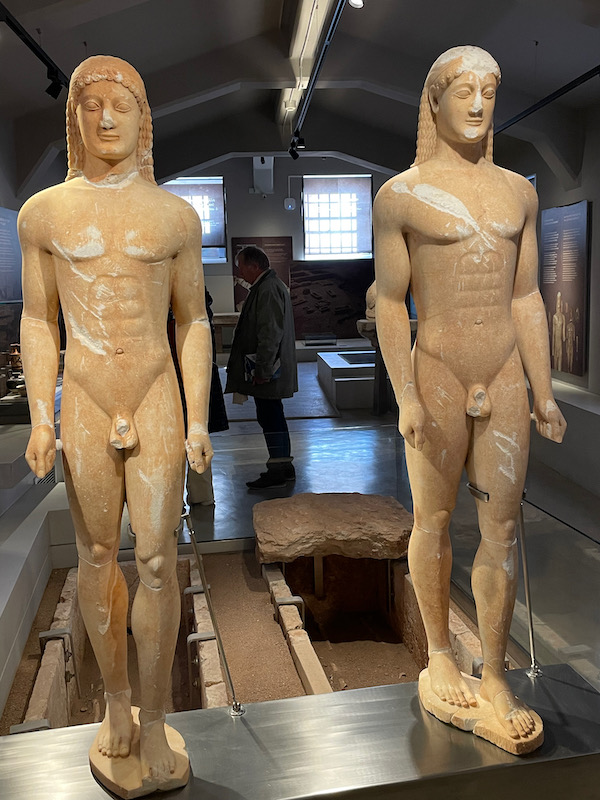
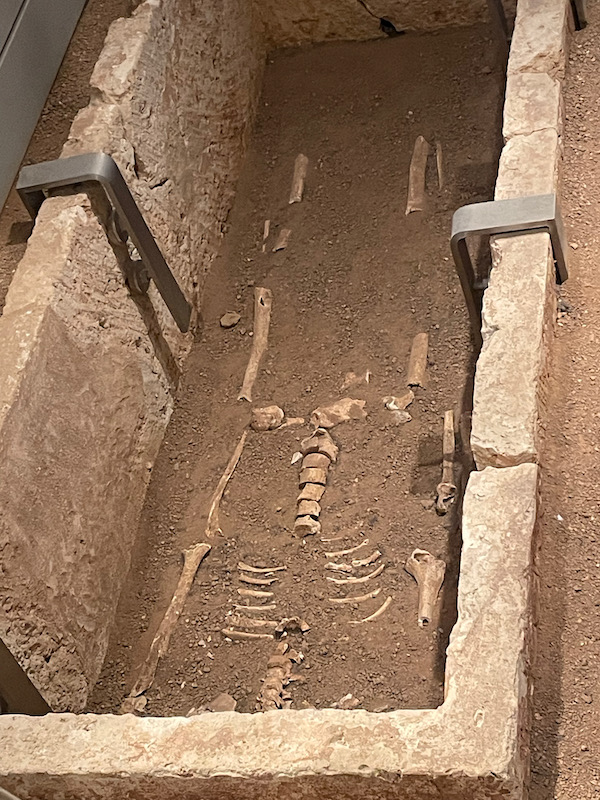
Once the Kouroi were recovered, an excavation was conducted in the area where they were originally dug up and a cemetery was found there. A total of 77 burials were found including 2 infants, dating from the 6th to the 4th centuries BC. You can see a picture of the sarcophagi in the background, behind some of the pottery that were found in the tombs.
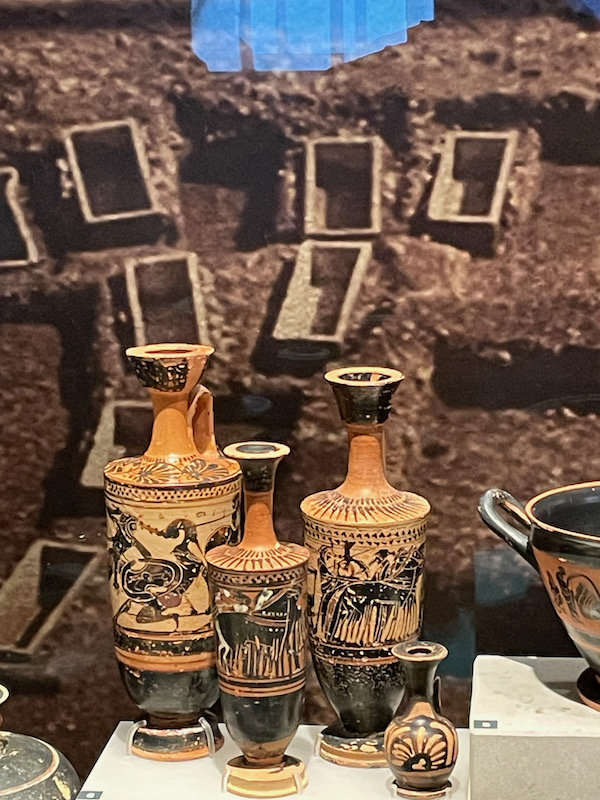
I have mentioned these two techniques before, but our guide also mentioned the progression of the different techniques. They are called "black-figure technique" and "red-figure technique". The black-figure technique covers the 7th and 6th centuries BC and was invented in Ancient Corinth. The main part of the vessel is pottery-colored (unpainted) and only the figures are painted on, using black. The red-figure technique was invented in Athens and covers the 5th and 4th centuries BC. With this type of pottery, the red-orange color of the pottery is visible in the figures, while the rest of the vessel is painted black.
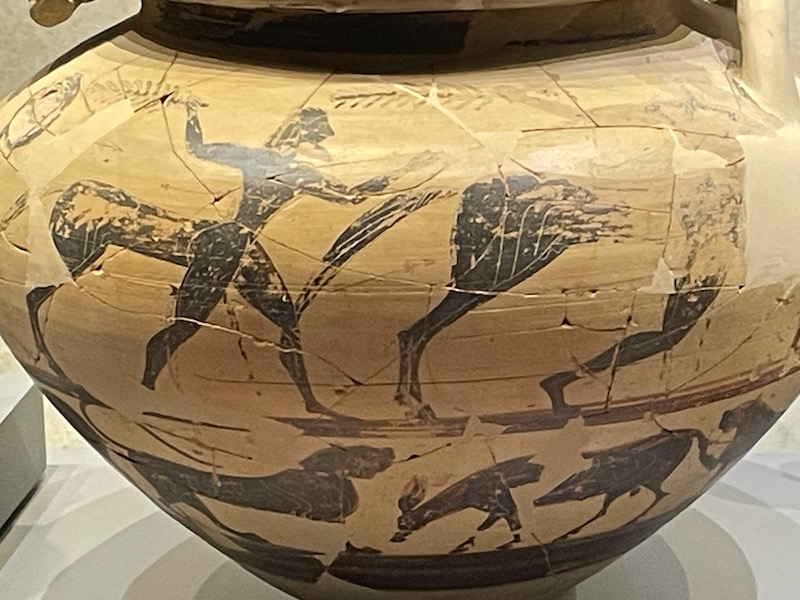
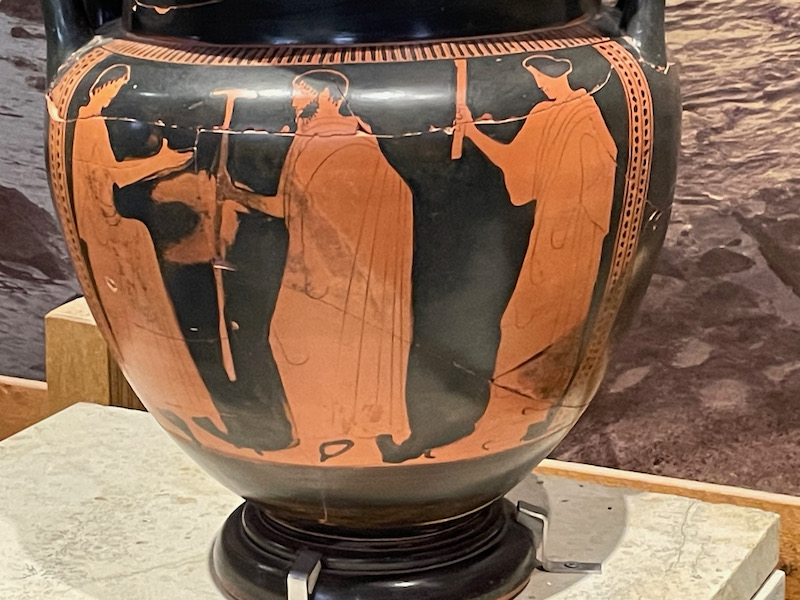
I attempted to get a good image that would show the indention in statues where different heads would end up being attached. Hopefully, this picture shows that ... different heads of generals or emperors could be place into this indention and then removed and replaced as time went on.
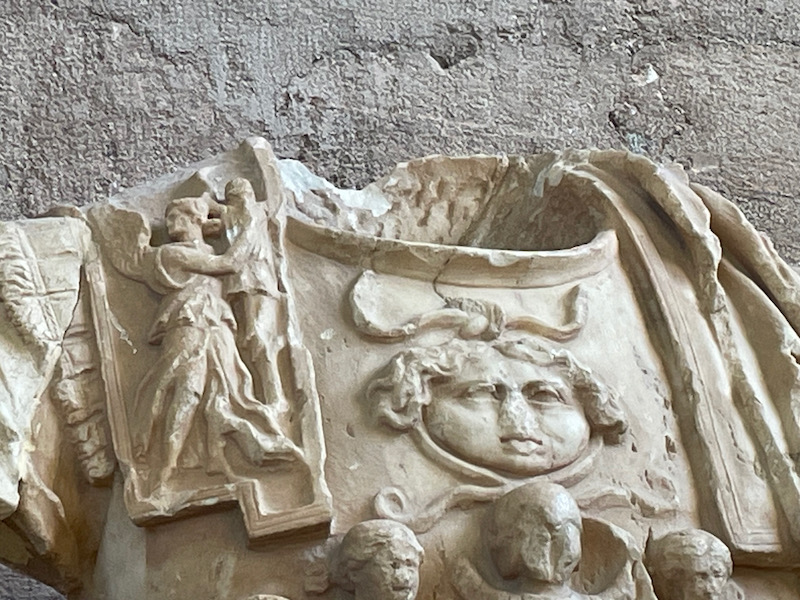
These mosaics come from a Roman Villa. The 2nd one has the head of Dionysos with fruit and ivy in his hair. These are a bit more recent, coming from the 2nd half of the 2nd century AD during the Roman period.
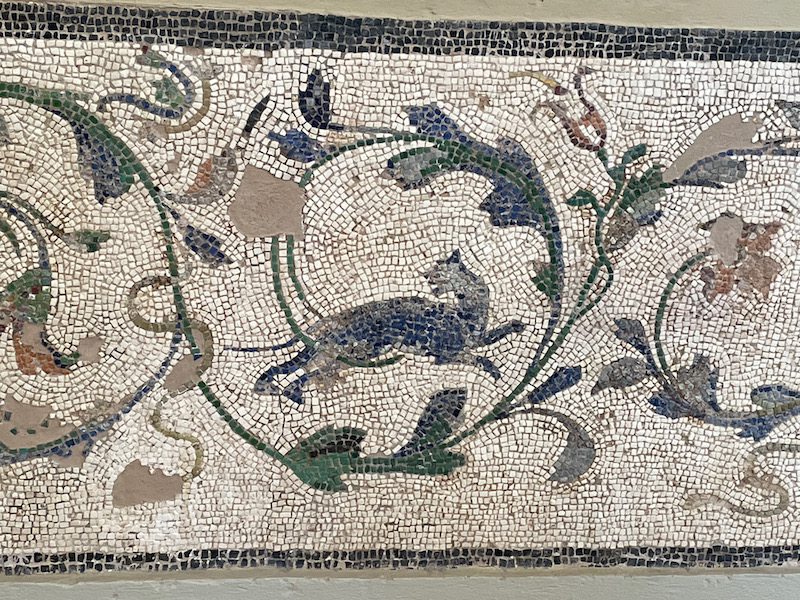
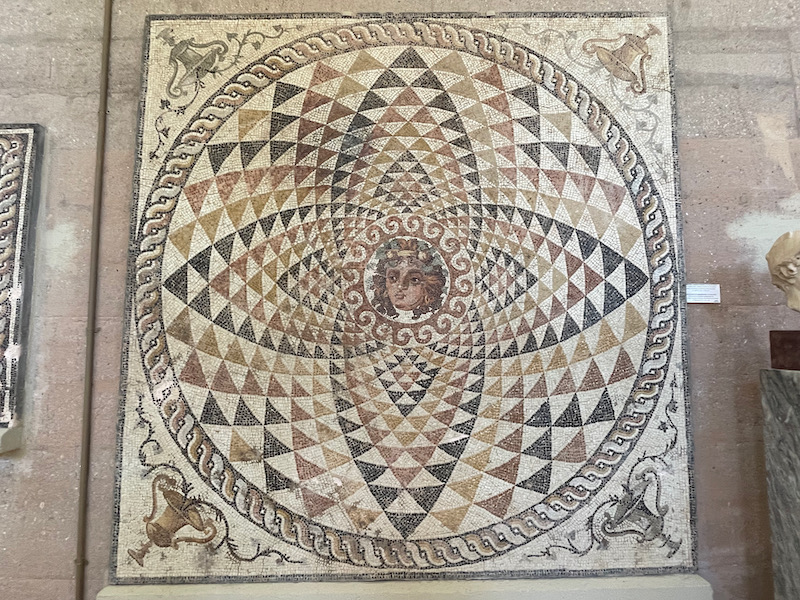
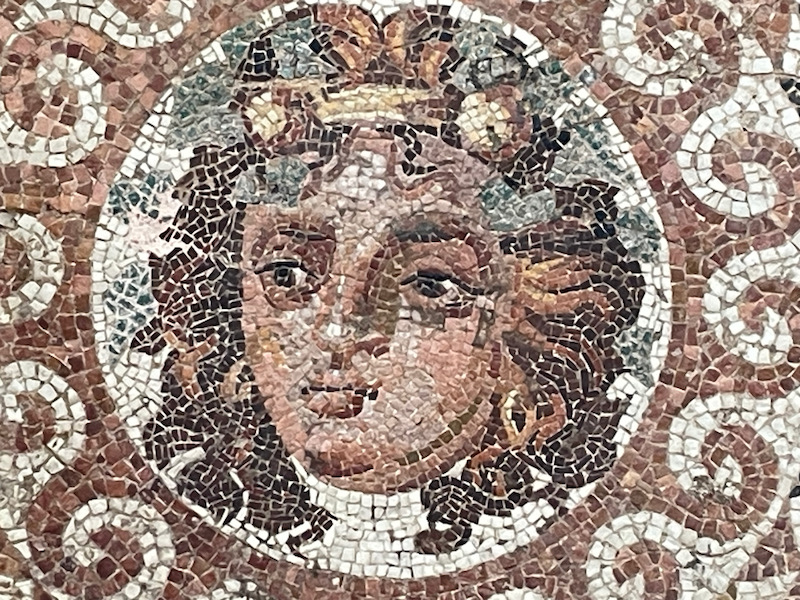
While most ancient statues that we see now are white, they would have originally been painted. This Roman statue still has some remains of the original colors.
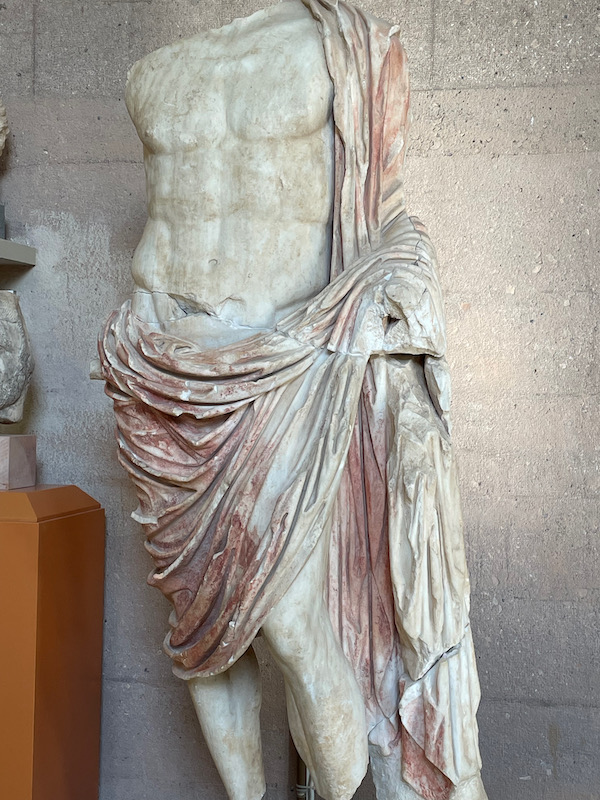
Then we headed outside. It is quite a large archeological site, but most of the site has just the very bottom remains of walls, so you can somewhat make out an outline of the building.
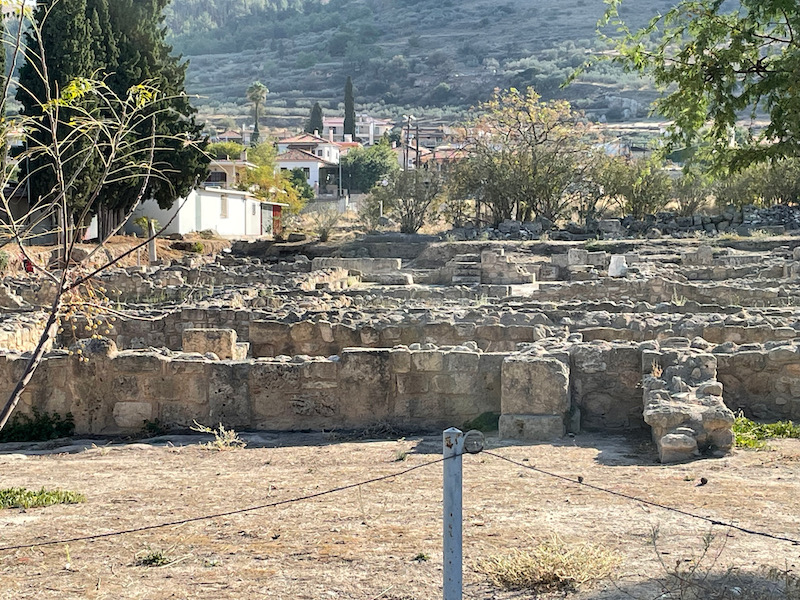
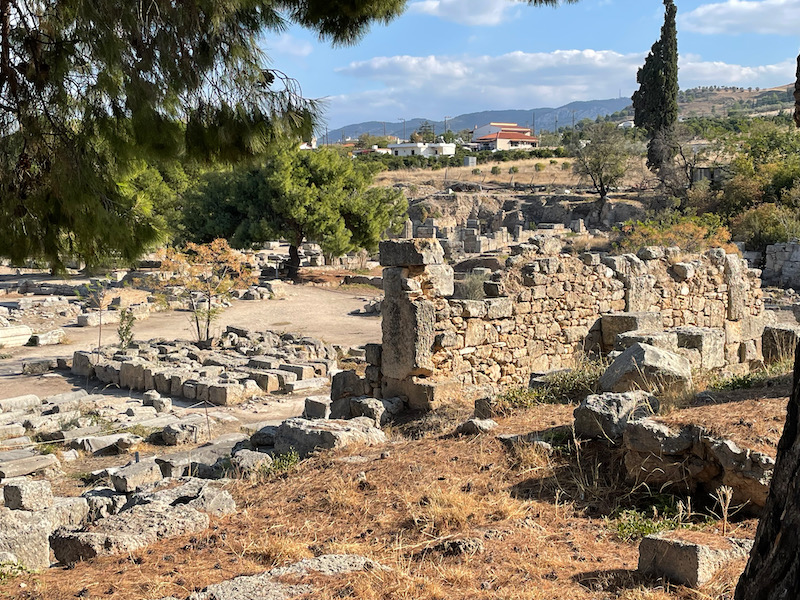
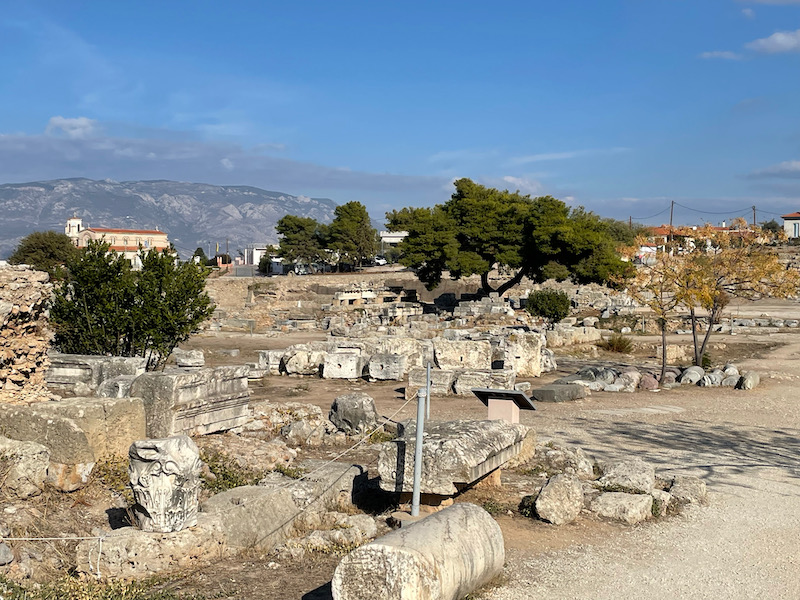
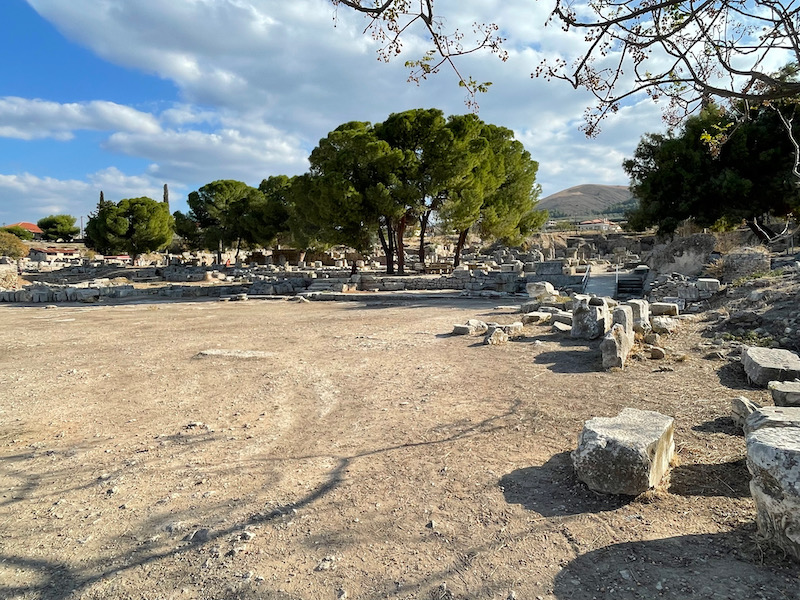
Obviously, Corinth was the place where the Corinthian columns were developed, the 3rd style of columns in classical architecture after Ionic and Doric. The Corinthian order was the most complicated of the three, showing the city's wealth and the luxurious lifestyle, while the Doric order evoked the rigorous simplicity of the Spartans, and the Ionic was a harmonious balance between these two following the cosmopolitan philosophy of Ionians like the Athenians. These are the remains of what is called Temple E. It was originally built in the early 1st century AD with 6 Doric columns on each side. In the late 1st century, it was rebuilt with Corinthian columns by the end of the 1st century, it was rebuilt and enlarged to have 12 columns along the long sides and 6 on the short sides, all sitting on top of a tall podium. It may have been dedicated to Octavia, the sister of the late Emperor Augustus. There isn't much left ... the Corinthian capitals of 3 of the columns and part of the podium, but the majority of the columns themselves are gone.
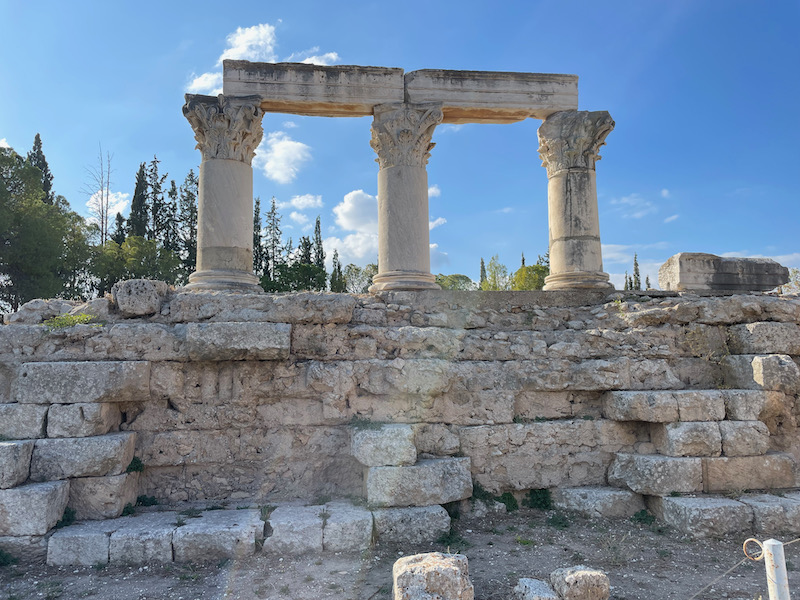
The most impressive part of the site is the 6th-century Temple of Apollo. When excavations started here in 1896, the Temple of Apollo was actually still visible. I just can't imagine people in the 1800's walking around with this temple sticking out of the ground and not wondering what else was here! Dating before the change to Corinthian columns, the temple has Doric columns. Originally built with 38 columns (6 columns on each end and 15 on the sides), 7 are still in place today. Our guide mentioned that these are monolithic columns, meaning the columns themselves are a single piece of stone. This is different than a lot of temples we had seen, where the columns were constructed with multiple round pieces that fit together. The Doric column capitals were cut from a separate block of stone and then added on top. Each of the columns is over 20 feet tall and over 5 feet in diameter at the base. According to the Pausanias, there was a bronze statue of Apollo in the temple.
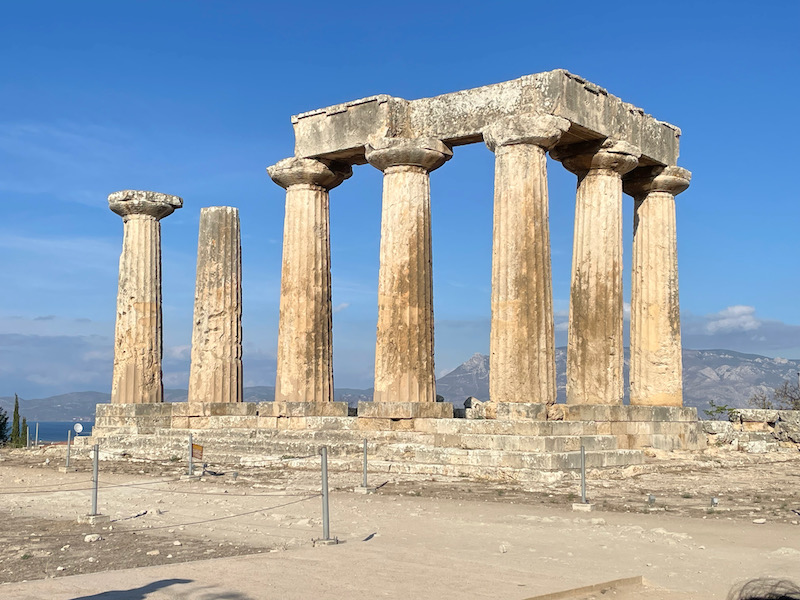
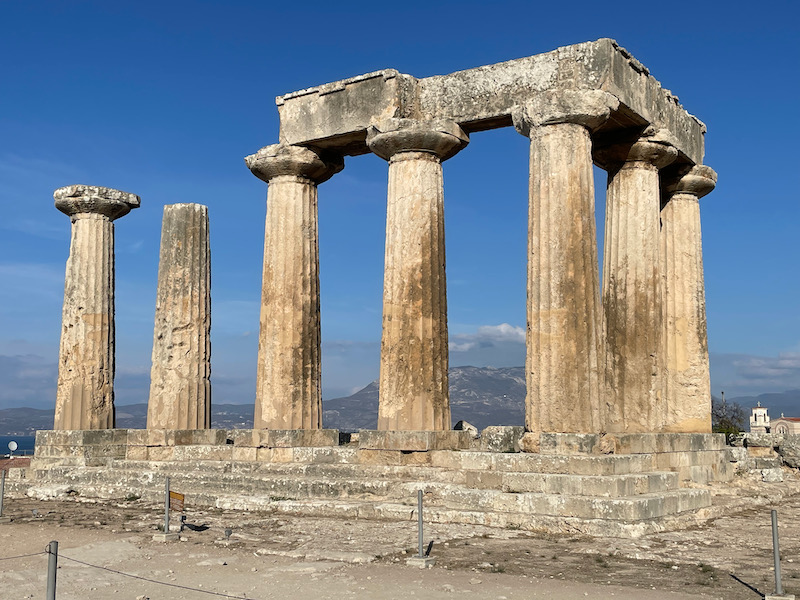
The Bema sits in the middle of an area that had a set of shops in the middle of the site. It was a large elevated pedestal from which Roman officials would address the public. For Christians, Corinth is well known from the New Testament. Paul the Apostle wrote 2 letters to the Corinthians, which gave insight into the life of the early Christian community here. Paul stayed in Ancient Corinth for a year and a half. During that time he was accused by the city’s Jews for illegal teachings and put on trial. The trial took place at the Bema in front of Roman proconsul Gallio, who dismissed the charges. The Bema was later converted into a 3-aisled Christian basilica during the Byzantine period, sometime between the 10th and 12th centuries.
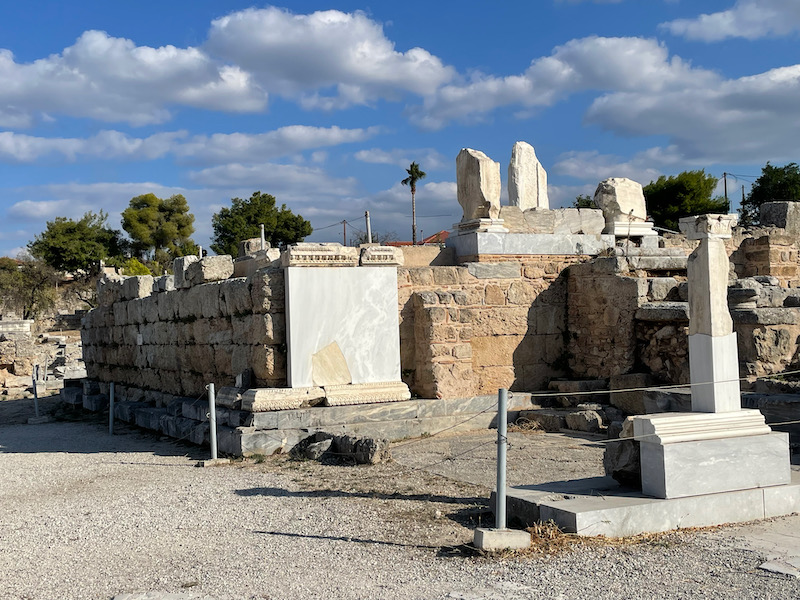
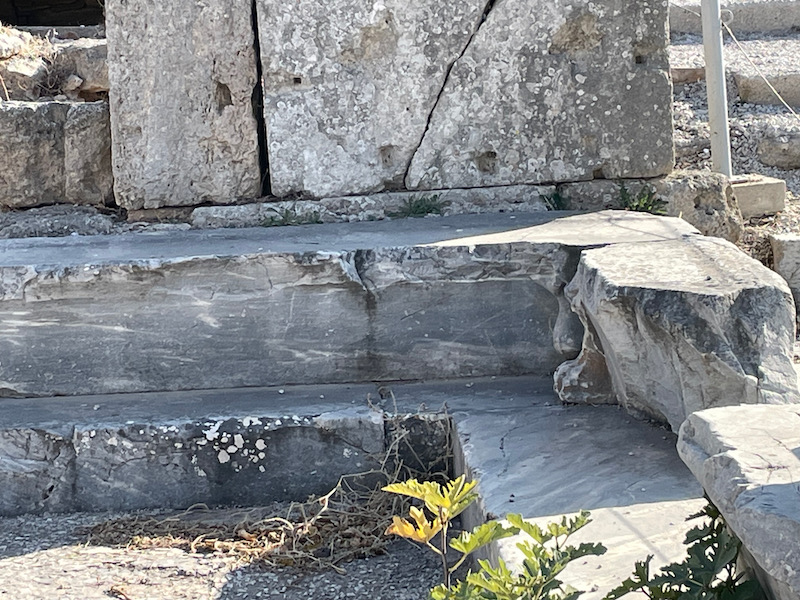
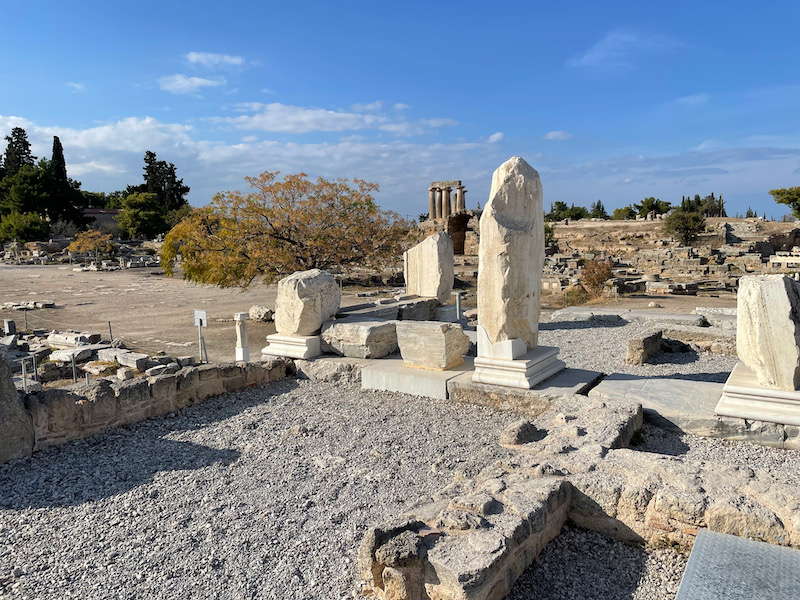
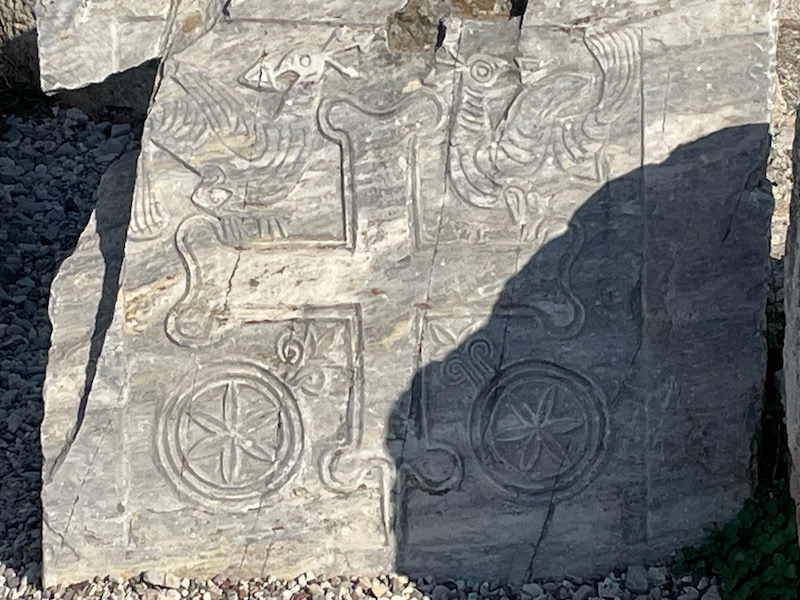
This straight street was the Lechaion Road, which was the main road through Ancient Corinth during the Roman period. It connected the Agora to the Lechaion Harbor on the Gulf of Corinth (3 kilometers to the north). It was lined with colonnades and pedestals with dedications as well as gutters to carry away rainwater.
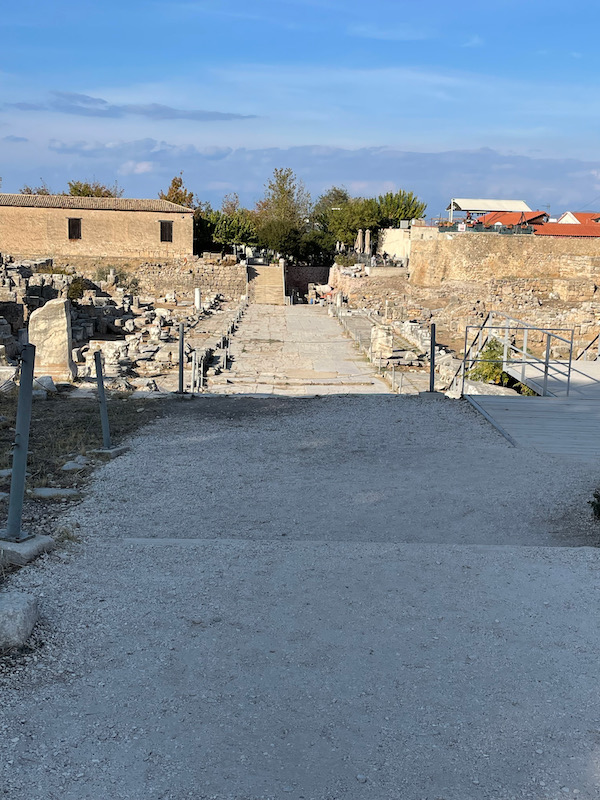
The Peirene Fountain was originally built over a natural spring in the 2nd century BC. Back behind the arches were large cisterns to hold the water, that then flowed out into several basins in front. There are two myths regarding the origin of the spring. The first claims Peirene, the lover of Poseidon, melted into tears after Artemis accidentally killed her son Cenchrias. The other myth says that the spring was created when the winged horse Pegasus struck the ground with his hoof after being bridled by Bellerophon.
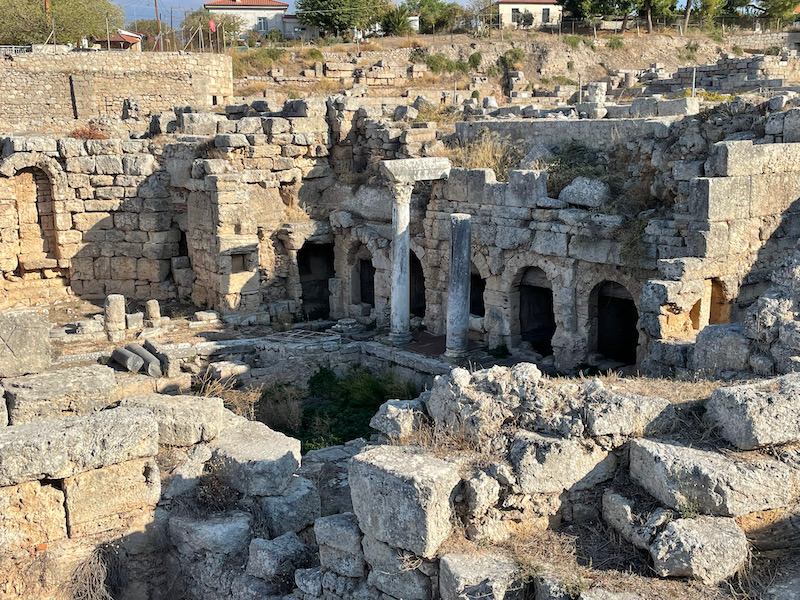
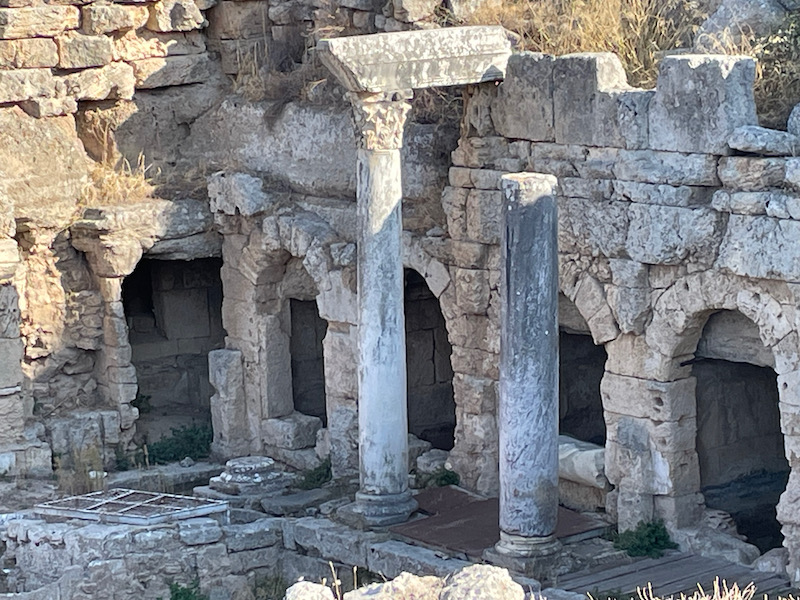
The Byzantines built a small church on the southwest corner. If you look over the niche that is on the right-hand side, you can see the 3 arched windows from the church. This niche can be found in the 1st picture of the Peirene Fountain above.
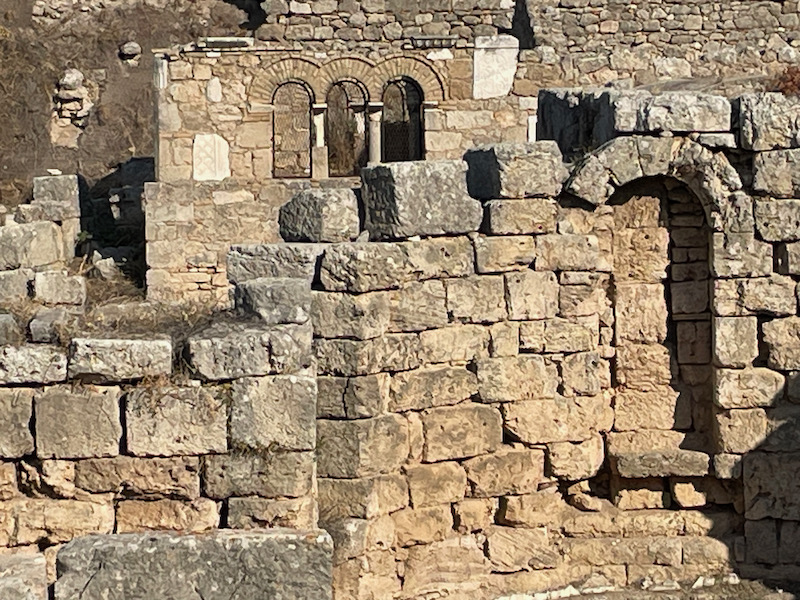
The Glauke Fountain is a large mass of limestone and, unlike the other fountains in Ancient Corinth, is not fed by a natural spring but had water piped in from other sources. When Pausanias described his visit to Corinth in 150 AD, he reported that the fountain got its name from Glauke, daughter of the King of Corinth, Creon. She was about to marry the hero Jason (of Jason and the Argonauts). Jason's first wife, Medea, was jealous and presented Glauke with a cloak infused by poison. After putting on the cloak, Glauke threw herself into the fountain in an unsuccessful attempt to stop the poison from burning her.
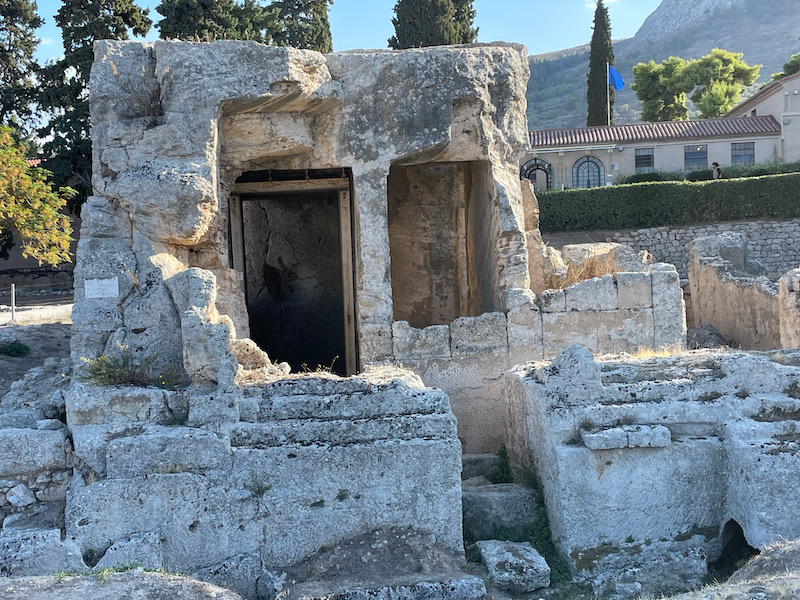
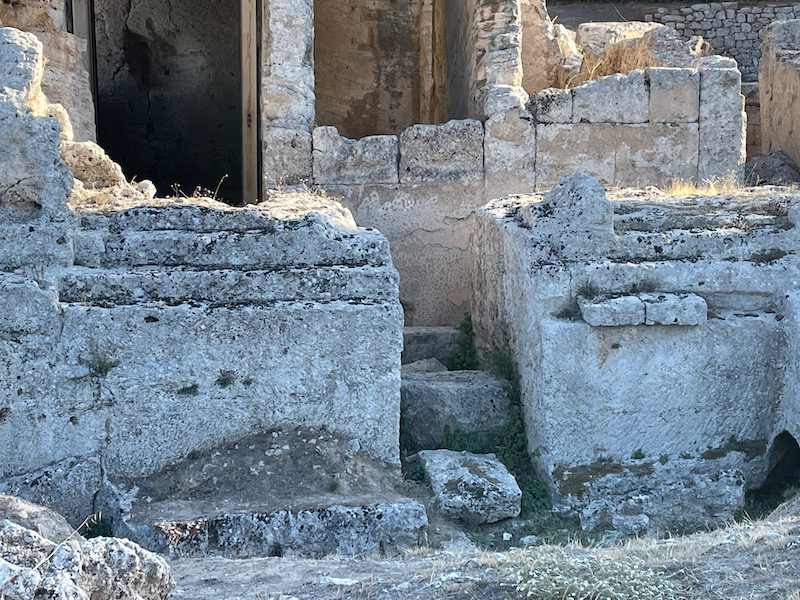
Outside of the actual archeological site, you can see what they say is the old theater. We didn't bother going in since, as you can somewhat tell from the pictures, it would be difficult to make it out as a theater if you didn't see the sign. You can somewhat make out the stage and the curve of the seating area. The first theatre was built on the slope of a natural hill around the 5th century BC and could hold 18,000 spectators. It was rebuilt in the 1st and 2nd centuries AD. In the 3rd century, it was turned into a venue for gladiator and animal fights and then abandoned after an invasion in 396.
